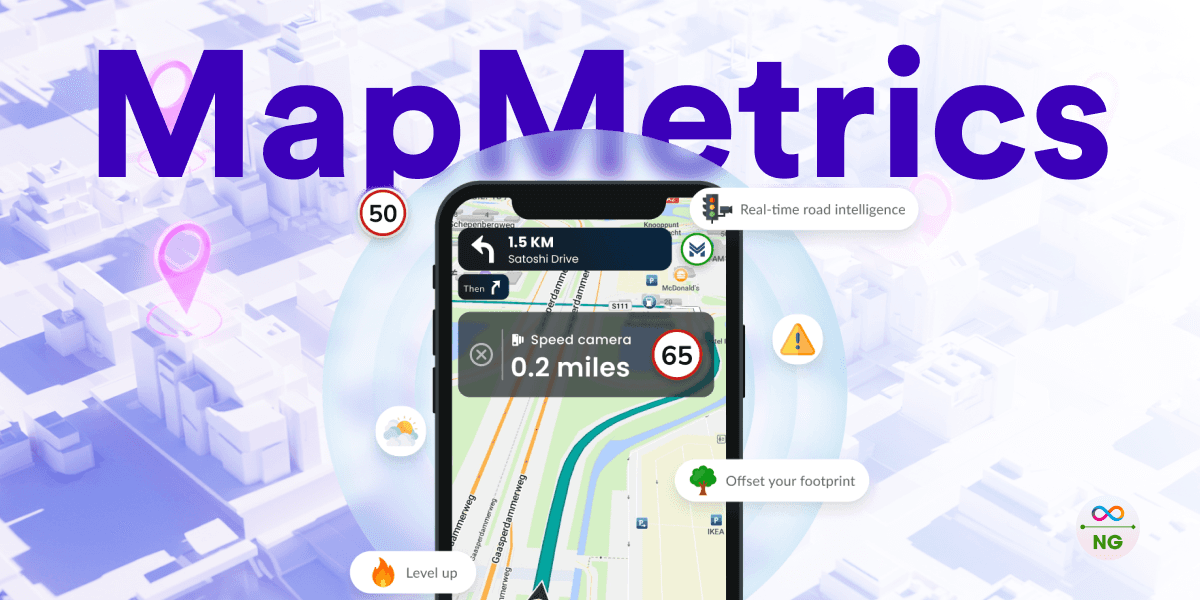
When most people think of blockchain and artificial intelligence working together, the conversation often leads to healthcare, finance, or agriculture. These are the obvious sectors, and for good reason—AI streamlines diagnoses while blockchain secures medical records, or in farming, predictive models optimise yields while blockchains track food provenance.
But there’s one area where this powerful fusion is quietly reshaping how we move through the world: navigation.
MapMetrics is leading that shift, though many innovators are still sleeping on it.
Security, accuracy, and transparency aren’t just buzzwords in mobility tech, they’re necessities. MapMetrics offers a way to achieve all three without compromising performance or privacy.
For urban centres plagued by traffic data manipulation, or countries where fake routes can lead to dangerous detours, this model brings a much-needed layer of trust.
And for users like you, it means safer routes, smarter choices, and the ability to shape the mapping tools you rely on every day.
A Problem Bigger Than Maps: Integrity of real-time data
In recent years, global ride-hailing apps like Uber, Bolt, and InDrive have come under scrutiny for their growing security concerns. According to data compiled by the Safety and Justice Task Force, ride-hailing apps saw a 34% year-on-year increase in reported safety incidents globally in 2023. A separate report by Business of Apps in 2024 revealed that nearly 1 in 5 ride-hailing users in emerging markets reported feeling unsafe during a trip.
You might think better policies or driver vetting would fix the issue, but the real problem lies in the integrity of real-time data—a lack of verified route info, user behaviour patterns, and transparent reporting systems.
MapMetrics, through its use of blockchain and AI, provides a cleaner, tamper-proof infrastructure that builds trust not just for drivers, but also for riders and city planners.
SPT: Not Just Hardware—It’s Intelligence at the Edge
The real game-changer in MapMetrics is the SPT (Special Position Tracker). While it may sound like just another piece of IoT hardware, the SPT is more than that. It's an edge device designed with machine learning capabilities, capturing ultra-precise location data from moving vehicles, pedestrians, and delivery bikes.
Rather than send raw data to a central server, the SPT pre-processes and classifies information using lightweight AI models right on the device. This reduces latency and ensures privacy, since not all data needs to be shared to validate its accuracy.
Once the SPT uploads its verified data, the blockchain layer kicks in. A community-driven consensus model ensures that all new mapping updates, from roadblocks to new bike lanes, are authenticated and validated by multiple participants before going live.
As a user, you no longer have to question whether that new road in your neighbourhood is real or whether traffic data is being manipulated for ad revenue.
Why Blockchain and AI Work Better Together Here
This dual-stack approach—AI for contextual learning and blockchain for data integrity—solves a range of problems that ride-hailing and navigation platforms still struggle with.
For instance, predictive AI can analyse your travel history and suggest optimised routes based on traffic, time of day, and driving habits. At the same time, blockchain ensures that the data feeding those predictions has been community-verified and hasn't been tampered with by a third party.
If you're in a region where navigation apps have historically been inaccurate or exploited, MapMetrics offers a refreshing level of transparency and control. It empowers users not just to consume real-time traffic updates, but to contribute and verify them as part of a trusted network.
Why this, could be explored on the Internet Computer Ecosystem
The architecture of the Internet Computer Protocol (ICP) provides a natural home for solutions like MapMetrics. With canister smart contracts running at web speed and built-in support for decentralization, ICP could extend MapMetrics’ capacity to operate independently of centralized cloud providers. That means lower latency, greater security, and a fully trustless environment for navigation data.
If you're building within the ICP ecosystem, MapMetrics should inspire you to think beyond conventional use cases. Startups can reimagine everything from logistics to ride-sharing, all while protecting user data and enhancing real-world efficiency.
Real Solutions for Real People
Article By: Mana Lamja